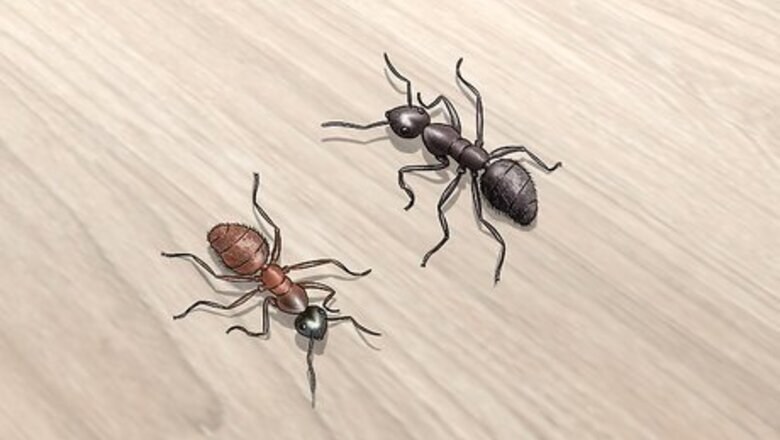
views
Spotting an Infestation
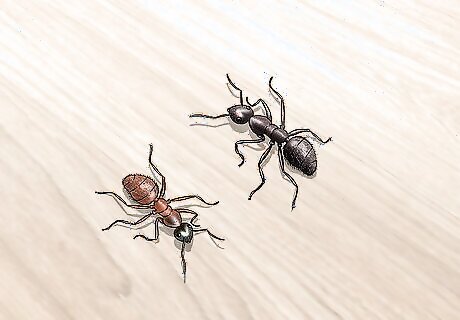
Learn how to identify carpenter ants. Carpenter ants are a group of ants belonging to the genus Camponotus, of which there are over 1,000 species. Carpenter ants live on every continent except for Antarctica and, as individual species, have a wide variety of differentiating features. However, certain traits common to the entire genus are useful to know when attempting to decide whether the ants in your home are carpenter ants or another variety. Some common traits to look for are: Color: Usually red, black, or an intermediate shade Shape: Segmented with oval abdomen and boxy, thin thorax. The tops of carpenter ant thoraxes typically have a smooth, even curve, rather than an uneven or bumpy one. Size: Approximately 3/8”-1/2", depending on caste Antennae: Yes Wings: Typical worker ants do not have wings. However, relatively rare male drones may possess them.
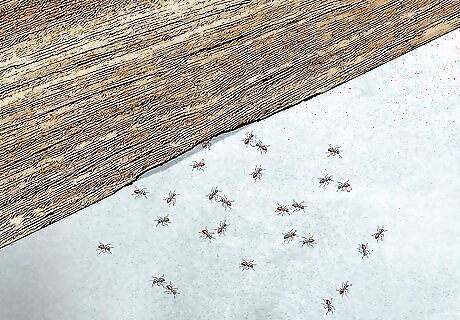
Learn where carpenter ants live. Carpenter ants can (and will) establish a nest inside or outside of any type of structure, but wooden homes are especially at risk because carpenter ants like to bore tiny tunnels into wood. Unlike termites, carpenter ants don't eat wood - they only tunnel into the structure to create a nest. Because moist wood is easier than dry wood for carpenter ants to tunnel through, the interior locations of carpenter ants will often be near a moisture source, like a leaky sink or bath. Sometimes, carpenter ants build a network of one or more satellite or parent colonies outside a structure and travel between these colonies and their foothold indoors, entering the structure through small cracks or openings. In these cases, outdoor colonies will often be located in tree stumps, landscape timbers, wood piles or other sources of damp wood. You can often locate carpenter ant trails between colonies in the early morning or early evening when the carpenter ants are foraging. There tracks are like a thin line. When carpenter ants tunnel, they can leave “frass", a substance resembling tiny wood shavings or sawdust, behind. Frass often contains dead insects. This can provide clues to their nesting location. If you come across small piles of frass in or around your house, carefully inspect the wood nearby for tunnels - probing the suspected wood with a thin screwdriver can reveal hollow spots.
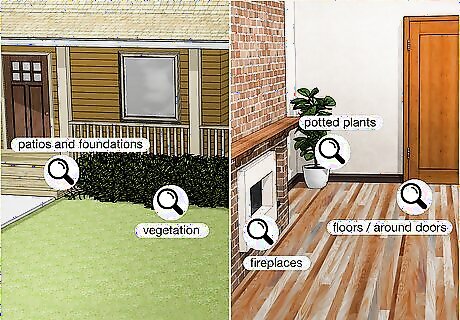
Know where to look for carpenter ant activity. Though they usually nest in wood, if a carpenter ant colony is within the wall of your home, you may have a hard time finding it. If you suspect you have carpenter ants, it's a good idea to look for them in easily-accessible places where you are likely to find them. Certain common household sites are more supportive of carpenter ant activities than others - especially if these sites are damp and/or have access to food. Look for ants in the following areas: Carpets – Check around doors, fireplaces, and other areas with easy access to the outside. Patios and foundations Areas with vegetation - Ants like to nest and forage in trails out of sight behind any vegetation, tree stumps, branches which rests against foundations, patios, etc. Pull back the vegetation to look for ants. When you find foraging ants, attempt to follow them back to their colony. Mulch and leaf litter can harbor numerous types of ants in addition to carpenter ants, such as pavement ants, fire ants, and Argentine ants. Rake mulch back from the ground to check for colonies. Floors – Potted plants, compost bends, or any other suitable item that has ground contact can contain carpenter ants.
Exterminating Carpenter Ants
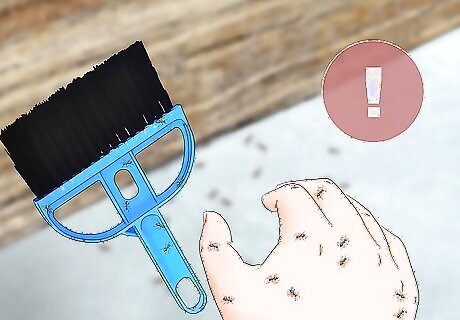
Use caution when dealing with carpenter ants. Though it's unlikely to happen, this warning bears mentioning: don't handle carpenter ants or their nests directly. Carpenter ants are not particularly aggressive and will not usually bite humans. However, when irritated or threatened, they can and will inflict a painful bite. Carpenter ants are also known to spray formic acid into bite wounds, increasing the pain. Though it's not the end of the world to be bitten by carpenter ants, you can avoid unnecessary pain by avoiding touching the ants or their nests unless it's absolutely necessary, in which case you should use long sleeves and gloves.
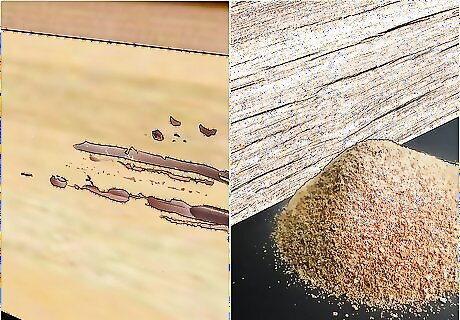
Locate the colony or colonies. The first step to exterminating a carpenter ant colony is to find it. To pinpoint the location of colonies in your home, look for ants, small holes, and piles of frass in the locations discussed in Part One, paying special attention to any areas that appear to contain moist wood. You can also test wood for infestations near the surface by firmly tapping. Wood with extensive burrowing can sound thinner or hollower than unaffected wood. Tapping can also agitate ants, causing them to leave the nest, where you may be able to see them more easily. Don't forget that mature nests often have smaller satellite nests nearby, which also must be located to ensure the entire ant infestation is exterminated.
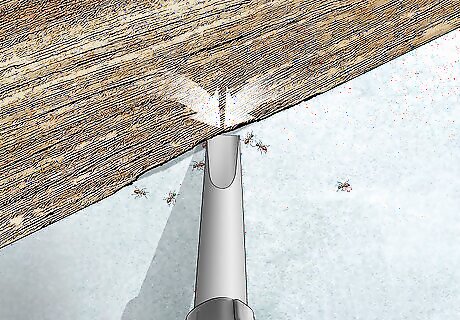
Destroy or remove the colony. In the case of smaller colonies, or ones that are fairly easy to access, it's sometimes possible to simply get rid of the colony itself. If the colony is outdoors, simply dispose of the affected wood carefully, using impenetrable materials like tarps to protect yourself from the ants as you handle the wood. If the colony has been located indoors, some pest control websites recommend using a vacuum cleaner's hose attachment to disrupt the colony and suck the ants out. If using the vacuum cleaner method, be sure to carefully seal and dispose of the dust bag to keep any ants that survive from escaping. If you find a colony that has extensively burrowed through the wood in your wall, don't cut the wood out - you risk compromising the structural integrity of your house. Instead, call a professional.
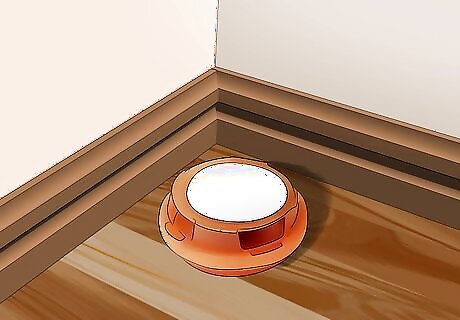
Use baits for ant colonies that cannot be treated directly. You may not always be able to find carpenter ant colonies. However, if you can find significant numbers of the ants themselves, placing insecticides in their trails can control and eliminate the colony. A variety of baits, traps, and other ant-killing products are available for sale to the general public - visit your local hardware store to check which options are available to you. Be very careful when using poison ant bait in houses with small children. Make sure that the child knows not to eat the poison, or, if s/he is too young to understand, keep the child under close supervision.
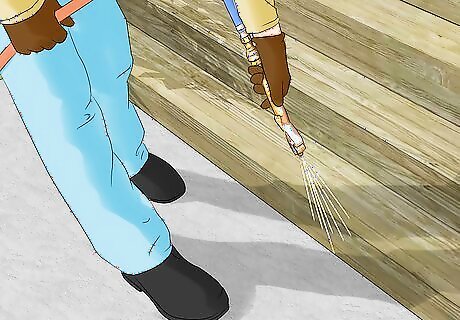
Contact a professional. If you can't quickly locate and eliminate the colony and you haven't had success with insecticides, it's usually best to contact a professional exterminator. Professionals have access to insecticides and other tools that aren't available to the general public, but, more importantly, their training and experience allows them to locate and assess carpenter ant infestations much more intelligently than the average person. Keep in mind that certain methods that exterminators use to kill ants may require your family to temporarily vacate your house for a day or two. Don't delay in contacting a professional - the longer you wait to deal with a carpenter ant infestation, the larger the colony can grow and the more extensive the damage to your wood structure may be.
Preventing Infestations
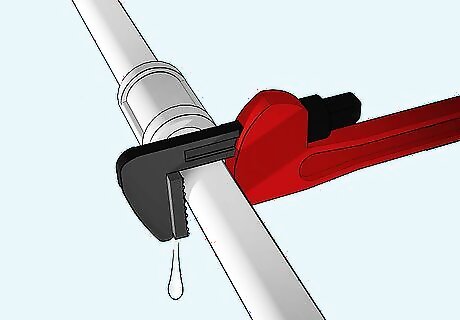
Eliminate sources of moisture. Moisture is a big factor in carpenter ant infestations. Often, a patch of wood will become susceptible to infestation after it's been exposed to moisture. By fixing or sealing any leaks that allow water into your house, you can make it much more difficult for carpenter ants to nest. Below are a few suggestions for eliminating the moisture that can contribute to carpenter ant infestations: Check around windows for signs of an improper seal Check your roof and weather-facing walls for leaks Keep basements, attics, and crawl spaces well-ventilated Look for and fix leaky pipes Clean clogged gutters to eliminate runoff water
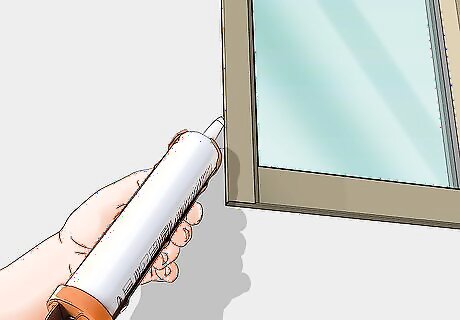
Seal up entry points, cracks and crevices. If carpenter ants can no longer get in and out your house, any indoor satellite colonies that are being fed by larger outside colonies will become isolated and may die off. Inspect the outside of your home for cracks, holes, and other small spaces that allow the passage of ants - pay special attention to the areas of exterior walls that are closest to the ground or foundation. Seal any holes you find with caulk or a strong putty. Also check around the points where water and electrical lines enter your home, as these points are extra vulnerable to ant infestation.
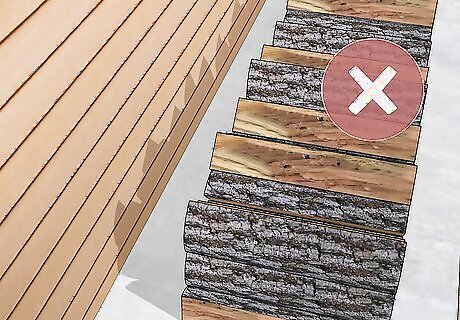
Eliminate wood materials near your home. Because carpenter ants like to make their nests in wood both inside and outside of buildings, finding and eliminating infested wood outside your wood can keep ants from making their way into your house. Carefully inspect any sources of wood near your home - if infested, move or carefully dispose of these wood sources. Places to look include: Stumps Firewood piles Old trees, especially if their branches touch your house. Piles of yard waste
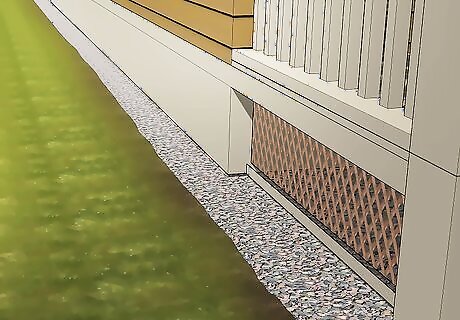
Consider installing an artificial barrier. If carpenter ants are a recurring problem, you may want to think about installing a small strip of gravel or stones around your home. This "barrier" zone is fairly inhospitable to carpenter ants and may discourage them from crawling into your house through holes near the foundation. Consult with a contractor to discuss the practicality and affordability of such a project at your house, or, if you're particularly handy, tackle this home improvement project yourself.




















Comments
0 comment